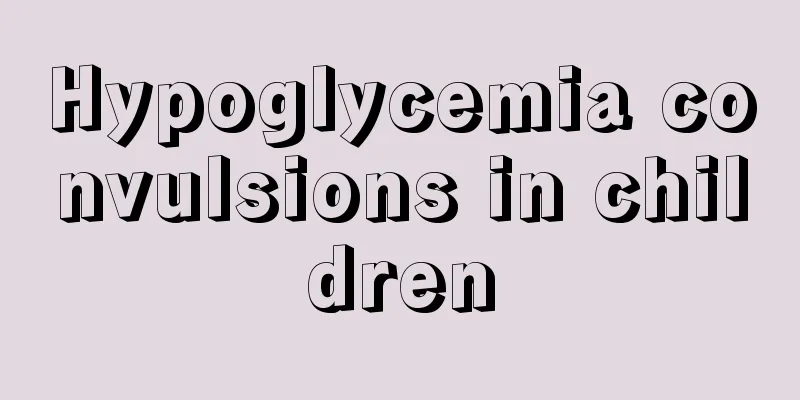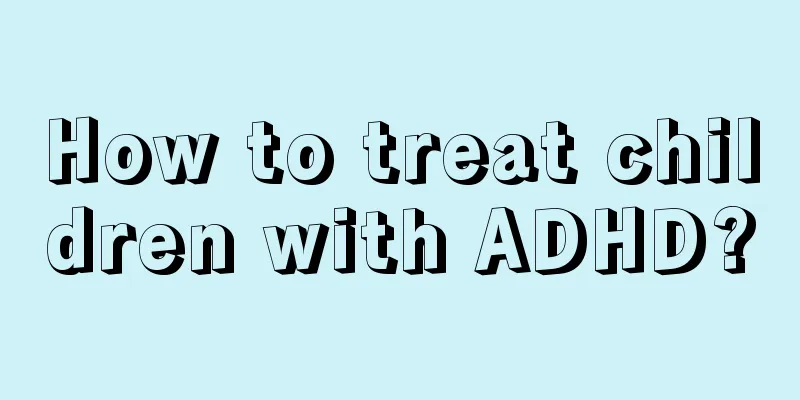Symptoms of pituitary gland abnormalities in babies

|
If a child has pituitary gland abnormalities, the harm is very serious and often causes developmental abnormalities in the child. Children are prone to this condition during the embryonic period, which can cause brain maldevelopment, birth injuries during the birth process, and suffocation. In addition, after the child is born, cardiopulmonary diseases may also cause brain damage and lead to brain maldevelopment. Let's take a look at the symptoms of pituitary gland abnormalities. Symptoms of pituitary gland abnormalities in babies Certain conditions are required for brain maldevelopment in children, such as the abnormal brain development in the embryonic period mentioned above, or the mother's illness during pregnancy, difficult labor, birth injury, asphyxia at birth, intracranial hemorrhage in the newborn, high fever convulsions, carbon monoxide poisoning, encephalitis, meningitis, head trauma and genetic factors. If the above-mentioned factors that cause brain maldevelopment appear, the possibility of the baby having brain maldevelopment is generally considered. If there are indeed factors that cause brain maldevelopment after the baby is born, then you should carefully observe the baby's daily behavior and analyze based on the symptoms of brain maldevelopment to see whether the baby really has problems in this area. 1. Obvious appearance features Brain maldevelopment can actually be reflected in appearance. Generally, children with brain maldevelopment have flat foreheads, which is a manifestation of poor brain development. Therefore, there is a description of the forehead in Chinese physiognomy. If the forehead is full, it means that the person is smart and naturally has a better destiny. At the same time, children with cerebral dysplasia will have a noticeably flat nose bridge and wide nose wings, making them look dull and lifeless. If you observe a child's eyes, you will find that the distance between them is quite large and the corners of the eyes are slanted upwards. Moreover, in daily life, children are accustomed to half-opening their mouths. If their tongues are exposed, they will be found to be larger and have cracks on them. In addition, children with brain dysplasia will also have certain characteristics in their limbs, such as shorter limbs, short and thick fingers, and slight deformities in the fingers or toes. A small number of children with brain dysplasia also have genital dysplasia. 2. Low intelligence Children with cerebral dysplasia tend to have slower intellectual development, and their intelligence tests may be average or below average. At the same time as intellectual development is delayed, some intelligence-related abilities, such as hearing, comprehension, and speaking ability, also show obvious retardation. If the baby is not very sensitive to sounds, or is slow to respond to various external information, or has speech problems, these are all symptoms of poor brain development. 3. Stagnation of physical development Children with cerebral maldevelopment will generally experience stagnation in the development of various physiological functions. In addition to the slow development of hearing and speech abilities mentioned above, all aspects of physical development will also stagnate. For example, a child's physical development rate is slower than other children, he is much smaller than other children, his eyesight and hearing are not very good, and he is prone to myopia or eye deformities. In addition, children with poor brain development all have poorly developed teeth, which are loose, easy to break, and prone to various dental diseases. 4. Abnormal daily performance Children with cerebral dysplasia have delayed development in intelligence and other related aspects, so they have difficulty concentrating, have fewer conscious reactions to their own behavior, and cannot remember people. In daily life, they tend to be relatively quiet and docile, lacking the vitality typical of children, and will not actively respond to the outside world. They lack interest in the outside world and sometimes show excessive crying and laughing. Children with severe brain dysplasia may even suffer from incontinence, aphasia, and sometimes epilepsy. |
<<: Kawasaki disease symptoms in children
>>: Symptoms of excessive heavy metals in babies
Recommend
What is the standard height and weight for a 7-year-old boy?
Many parents said that after taking their childre...
How many days does it take to wean a baby?
In fact, at the beginning, the most nutritious fo...
What should I do if my baby’s genitals are red?
Now that the two-child policy has been fully open...
What should I do if my child has a fever of 39 degrees and is having convulsions?
Generally speaking, when a child has a low fever,...
Febrile seizures in children
The Chinese family has changed from a large famil...
What are the folk remedies for treating sinusitis in children?
Children are the key protected objects in the fam...
How to protect teeth for children
Some parents think that children will have to cha...
What should I do if my child likes to hit others?
Children are at the peak stage of development. Du...
What ointment should be used for the red glans of a child
Whether they are adult males or underage males, th...
Is it zinc deficiency that causes children to not eat?
Many people will ask if children not eating is du...
Why do children's lips turn purple when swimming?
Family members still need to keep track of their ...
Will fever cause coughing in babies?
There are still many people who get angry in life...
How to treat children's astigmatism and amblyopia_How to treat children's amblyopia and astigmatism
Nowadays, many parents always feel that their chi...
Newborn jaundice on the fourth day 16?
Generally speaking, most babies will have physiol...
What disease is there on the child's lips
In fact, in life, it is not only the body that is...









